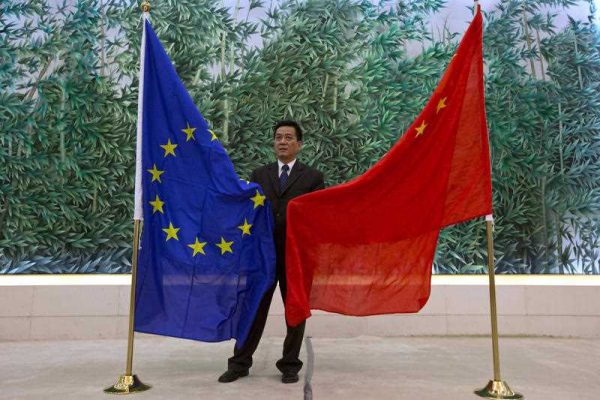The date has symbolic resonance: it was 6 May 40 years ago when an agreement was signed inaugurating diplomatic relations between China and the European Economic Community (EEC). Yet now what is at stake is the fact that China–EU relations are no longer anchored solely in an economic partnership, but deal more and more with matters of political and diplomatic concern.
The visit came as the second in a series of events planned in 2015. Two months ago it was the turn of Martin Schultz, the President of the European Commission, who in March had met President Xi Jinping together with some of the highest officers of the Chinese government, among them Yang Jiechi and Wang Jiarui, respectively the Minister of Foreign Affairs and the Director of the International Department of the Central Committee of the Chinese Communist Party.
Then, in June, is the EU–China Summit. The inaugural edition in 1998 was held in quite a different international context. The Cold War was over, but international politics and the world economy were — to a certain extent — driven by US preferences. To many, it was a de facto unipolar world. At the time, the EU counted only 15 member states; and the Lisbon Treaty, which made substantial changes to many of EU foreign policy’s practical instruments, was still far away.
China, for its part, was a different country from what it appears to be today — heavily globalised and highly interdependent with international markets. At the end of the 1990s, despite Deng Xiaoping’s political and economic reforms, China’s international profile remained low. In the eyes of the international community, China was a mere bit player, far from claiming the image of a ‘responsible’ power.
In this way, the evolution of the China–EU relationship reflects a profound identity transformation that both actors have had to face within a fast-paced multipolar world. In economic terms, the exponential growth of the economic partnership has been astonishing in recent years. The Beijing-based European Chamber of Commerce wrote in a report that Chinese companies are increasingly looking at Europe as a worthwhile investment market. In a 2013 survey, 97 per cent of Chinese companies operating in Europe declared their intention to maintain a high level of investment. Most importantly, they also forecasted that capital will remain higher than pre-2013 levels.
This phenomenon also explains the willingness of Chinese companies to invest billions of euros in the acquisition of many European national firms. A growing number of Italian companies, such as Pirelli or Ansaldo Energia, have already demonstrated the increased vulnerability of the Italian market, and — to a certain extent — its dependence on Chinese FDI. Similarly, China is and will remain a strategic market for European exports. In 2014, EU exports to China were up 11.3 per cent to a total of 165 billion euro (US$183 billion).
At the same time, both China and the EU are aware that the strategic partnership is now ready to take another necessary path. More clearly, both parties recognise the need to upgrade the level of political cooperation from merely symbolic to heavily pragmatic. Yet, from a Chinese perspective, what matters are still trade opportunities: that is, the One Belt, One Road (OBOR) initiative, which is clearly welcomed by European states. In total, China is expected to invest an estimated US$1.6 billion.
Launched by Xi Jinping in 2013, OBOR will allow the EU and its member states to greatly benefit from Chinese investment. But some blind spots remain. Specifically, it is not clear whether the investments on EU soil will take place on a bilateral or a multilateral basis. It is likely that the OBOR project will bring China to play a far greater role in international security. This is not only in the Asia Pacific region but also in areas, such as the Mediterranean, that for decades were considered to be part of the EU’s privileged area of interest.
Inevitably, the match between China and the EU will not be played solely on economic grounds, but it will face important extra-economic challenges in many different areas. International security, maritime and ocean management, transnational terrorism and illegal immigration are just a few.
This also poses crucial questions to both actors. Firstly, is the Chinese model of development really applicable within a Western — and already developed — environment? But, more importantly, will EU multilateral solutions to international challenges be able to overcome the discrepancies regarding international norms and standards that are often contested between China and the rest of the world?
Out of necessity and common interest, both Brussels and Beijing are becoming more aware that a singular focus on economic opportunities is no longer sufficient to solve global problems and regional challenges.
Silvia Menegazzi is Postdoctoral Fellow at the Department of Political Science, LUISS Guido Carli University, Rome. This article is a version of an article originally published by Cinaforum, a leading Italian website on China’s international affairs.

